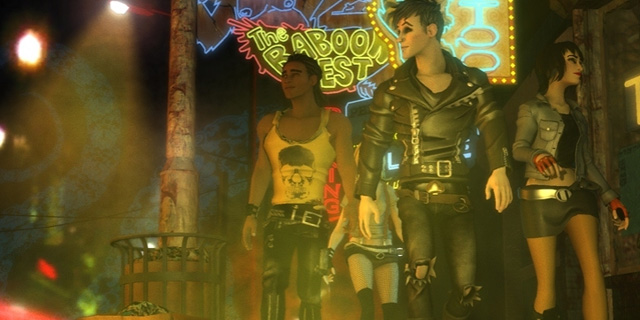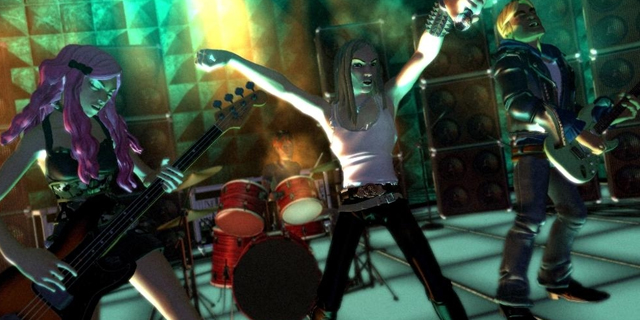
I’m a huge hockey fan. How typical: I’m a Canadian talking about hockey. The next thing you know, I’m going to start talking about beer and poutine! (Great combo, by the way.) I mention hockey because there’s currently a discussion going on about the National Hockey League’s decision to hold select games throughout the season in outdoor venues. A great idea is a great idea, but oversaturating the market can lead to early exits for all types of products, and games are no exception.
It started out as the “Winter Classic:” two teams facing off on New Year’s Day at a large baseball or football stadium. A rink is constructed and extensive precautions are undertaken in order to ensure the game goes as smoothly as possible. Playing outdoors means you’re at the mercy of the elements. Rain, fog, warm temperatures and even snow have made their mark on the festivities. By all accounts, the event has been a tremendous success. The latest version, between the Toronto Maple Leafs and the Detroit Red Wings, was home to 105,491 fans. It’s also a huge financial gain for the NHL and a ratings gold mine. It’s a spectacle to behold.
Since then, the NHL has created more versions of the outdoor classic. There is, for example, the “Heritage Classic” between Canadian teams (Vancouver and Ottawa square up in a month’s time). There was an outdoor game between Los Angeles and Anaheim in California. Yes, that California. There are rumors of six or seven outdoor games per year being discussed. Success has led the creators of the project to believe that more is better. Since one game was successful, why not two? Ten? Heck, let’s have a quarter of the 82-game season outdoors. People obviously love it, so why not give it to them?
This kind of thinking is dangerous; it’s uninspired at a creative level, and it risks alienating the fans by oversaturating the market. This results in a bored audience. I hope the NHL keeps the outdoor venue, but in small doses to keep the allure strong. Does this sort of thing sound familiar?
What ever happened to Guitar Hero? Was it just a fad? It clearly meets the definition: a short lived, intensely-popular creation in the mass market that inspires many imitations, makes a ton of money and will live on in some form of notoriety. I won’t deny it; I bought into the hype and have absolutely no regrets. I’m about the least musical person you can know, but I still had a blast using the plastic controller and mastering the toughest songs on expert. Guitar Hero II saw increased sales, better reviews and an enhanced reputation among mainstream media. Soon, gamers and non-gamers alike were strumming along to classic rock songs. The game’s success in hindsight wasn’t so difficult to predict; it was easy to learn, hard to master, incredibly fun and interesting to video game fans and music lovers alike. It was so successful that it spawned another sequel. Then another. Then another. Then versions of the game started coming out that featured a single band: Metallica, Aerosmith and Van Halen.
Harmonix, the developer behind the first two versions of Guitar Hero, went on to create what would eclipse the Guitar Hero franchise by a country mile: Rock Band. The biggest difference was the fact that it came with a guitar, drums and even a microphone. Up to four players could form a band and play song after song, allowing a more private version for untalented karaoke singers to bellow out their favorite ballads. It was a smash hit, so of course a sequel was made. Then another. Then another. Does that sound familiar?
From 2007 to 2011, there were 11 Rock Band games released: three main, two band-centric (Green Day, The Beatles), two spinoffs and four portable versions. Never mind the seven track packs, releasing collections of songs you could pay to download to add to the game’s list of tracks. In addition, songs were released each week for purchase. The amount of content, by the time the franchise was ended, was staggering. In total, players could play up to 1,689 different songs, including 25 full albums. Every artist was represented, from Black Sabbath to Don McLean. The game was selling so well that Harmonix became the world’s largest seller of drum sticks.

Was it too much too soon? Developers raced at a feverish pace to release their version of Guitar Hero and Rock Band. Bands were desperate to get their tunes on the download list; a few negotiated deals that saw the songs be released for free because they just wanted the exposure. Rock Band 3 was the last major title in the franchise, released in 2010. Now, all you hear about Guitar Hero and Rock Band are pleasant memories and closets full of unused, cumbersome plastic instruments.
The influx of titles completely burned out the market. The content was sufficient and the games were (rightly) given high praise by critics, but players complained that they had to constantly switch discs to have access to all the songs. Beatles fans were forced to buy an entire new game when many would have been happier to download them to Rock Band 2 or 3. The rhythm genre was around before these two franchise titans and will be around in the future, but many have learned this lesson: oversaturation of the market is a good way to ruin even the most successful product.
It must be so tempting to move full steam ahead when you catch lightning in a bottle. Many companies have made their fortunes, and etched their names in history, by capitalizing on a good idea and running with it. I’m reminded of the defunct wrestling promotion WCW. It absolutely obliterated WWF in the ratings for well over a year with the “New World Order,” a group of bad guys the fans cheered for. The problem is that WCW kept it winning titles and headlining pay-per-view events, over and over, until the fans were completely sick of the gimmick and eventually tuned it out. Problems with the high-profile wrestlers eventually ruined the company; guaranteed contracts and creative control handcuffed the executives when they wanted to make changes to the storyline. The nWo was their money-maker, but it was also their downfall.
I experienced my own personal oversaturation from playing two games in the Star Wars universe, Jedi Knight II: Jedi Outcast and Jedi Knight III: Jedi Academy.
Jedi Outcast, released in 2002, was one of the most successful Star Wars games to date. It put the player in the shoes of Kyle Katarn, an older protagonist and former Jedi. The first few levels are standard shooter fare. They’re average, although the timeless Star Wars music helps add drama to the banal level design. Once you start your Jedi training and are handed your first lightsaber, the game comes to life. Your first Sith opponent, unleashing the familiar buzzing red sword, is a delight. The dark hallway perfectly contrasts the impossibly-brilliant light you hold in your hand. You feel like you’re part of the movies, and the classic clash sound effects accompany thrilling battles throughout the rest of the game.
I loved it. It had problems, but the early-2000s were an interesting time for games. 3D had been around for a while, but it was hardly perfected. Controls were a bit clunky and animations were nowhere near as good as they are now. Imagine my delight when I heard that a sequel would be released just a year later. Surely LucasArts could expand upon one of my favorites and take advantage of its experience and iron out some wrinkles exhibited in Jedi Outcast.
Sadly, it wasn’t the progression I’d hoped for. The developers changed it from a purely linear game to a more open-ended one; players had the choice of picking which missions they’d like to tackle first. You can also customize your avatar, but this didn’t impress me. I wanted to play as Kyle Katarn again! I wanted to hear his gravelly, wise voice. I wanted him to tell me the computer console was offline. Ah well, can’t have everything.
The major gameplay difference in Jedi Academy? The expanded lightsaber options. You could customize your color (awesome) and decide if you want a double-sided weapon (a la Darth Maul) or to fight with two lightsabers, one in each hand.
So… what’s the problem? Lightsabers are great. Lightsaber fights are great. More lightsaber fights should be awesome. In Jedi Outcast, every duel felt important and fun. Varying up between light, medium and heavy swing styles felt necessary to defeat your enemies. The lightsaber is perhaps the most iconic weapon in entertainment, and to have the freedom to fight your own battles, complete with movie-accurate visuals and sound effects, was digital ecstasy.
In Jedi Academy, I hit lightsaber overload. Near the end of the game, I was relieved to see an area where I wouldn’t have to duel multiple Sith enemies at a time. Nearly every level had lightsaber fights, and by the end of the game, you’re doing very little else. Sure, slowing down time while you slice an enemy with your weapon is fantastic, but there is a limit. Even with new force powers, I stopped having fun due to an overabundance of the very activity that hooked me in the first place. It was disappointing, especially since the game isn’t a bad one by any means.
Less is more. Subtlety can lead to greater results than bombastic, over-the-top action. It’s a fine line to tread: do you give the audience what they want all the time, or do you hold back and pick your spots? There is no magical formula, no instruction manual telling you to do what and when and how with something great.






















